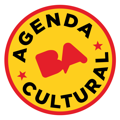Dias de Nietzsche em Turim
Centro Cultural San Martín
Room: 1
Film information
The books, writings, and records surrounding Bressane’s characters (Miramar, Jerónimo, Mario, and Friedrich, who are constantly reading, writing, listening, watching), plus the music, the cinema, and the paintings, they all have a truly essential place in Júlio Bressane’s cinema. Artistic language is the true theme of his films: “Language is a way to experience the world. Cinema was born in times of meta-language”, and that’s why his films are shaped up to be similar to essays, theory, criticism, analysis, quote montage. A piece of Eisenstein here, another by Nelson Pereira Dos Santos there. Fragments of silent films, footage from the early days if cinema, images that border the desert –that which existed prior to cinema. A phrase by Wagner, a dialogue from a Pasolini film, a conversation out of a Wyler film, a text by Saint Jerome, the voice of Mario Reis: none of those things, no images or sounds are used to compose anything resembling an anthology. Instead, they do set the basis for an impossible translation that reinvents, for a possible trans-creation. Making art to understand what art is.
Mario, Miramar, Jerónimo, Friedrich, Hilda, Matilda, Gaspar, and all the other characters behave on the image as projections of a spectator (a translator, a transcreator) who faces a work of art. A projection of a spectator and also of the filmmaker, the artist as a sensibility that gives a new order to the commonplaces of art; of the artist as a spectator of art, as a sensibility that is able to say about itself what was once sang in a Portuguese verse:
“It’s not me who describes. I’m the canvas.
And a hidden hand brings color to someone in me”.
Let’s imagine Miramar as a first film, a starting point. O mandarim as a prologue. São Jerônimo and Dias de Nietzsche em Turim as the development of issues drafted in Miramar’s formation novel: the artist being more the canvas than the projector, the projection being something mental rather than a sophisticated technique.
[“Images today, improved as they are from a technological point of view, are made more easily –I’m not just saying it because of a technology problem. How many million frame shots were made in order to arrive to what we easily do today? (…) I believe there was a distortion regarding what was called image quality. Image quality means a mental quality, right? (…) The problematic sphere in the field of ideas, the mind field, is not always related to the instrument. Buying a Concorde to go from Rio to Niteroi? It doesn’t even take off. Putting a diving suit on a guy and throwing him into a bathtub? If he’s wearing a diving suit, he needs to go gown 40,000 feet. So, that’s what I believe, and I’m speaking about all of us. The fact that I’m here talking doesn’t mean I’m out of it. On the contrary, perhaps I know this well because I’m in it like everyone else. In that absence, that lack”].
Art as a living organism that writes itself, more a creator of the artist than a creation made by him, who is actually a mere instrument, a simple spokesman for an external force he doesn’t dominate (“and cinema, in that sense, is devastating: you do something, you imagine that you have control, and what you actually control probably represents about five per cent of the film”).
JCA
More Screenings
Same day, same hour
Deshora










 0800-333-7848 / M to F / 10:00am to 08:00pm
0800-333-7848 / M to F / 10:00am to 08:00pm